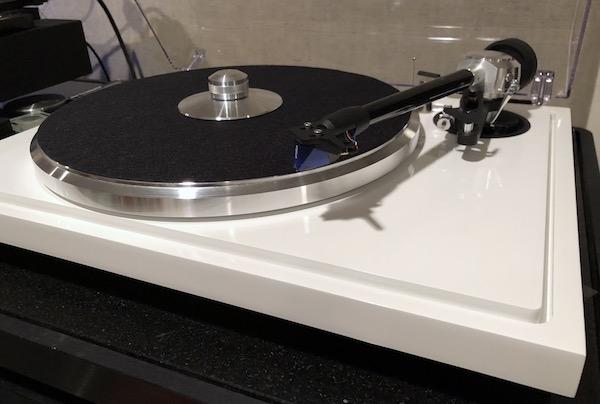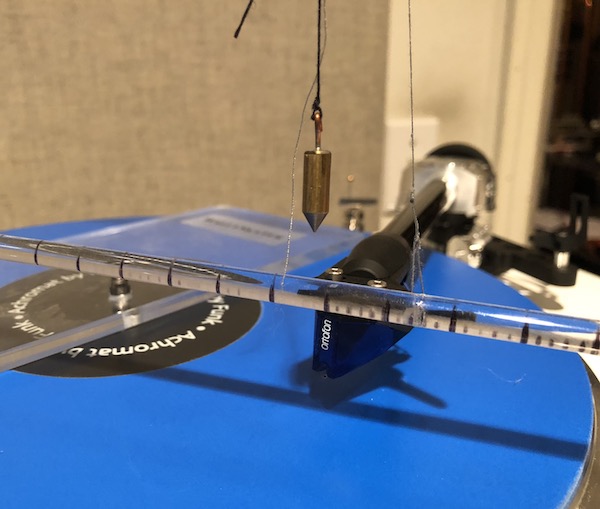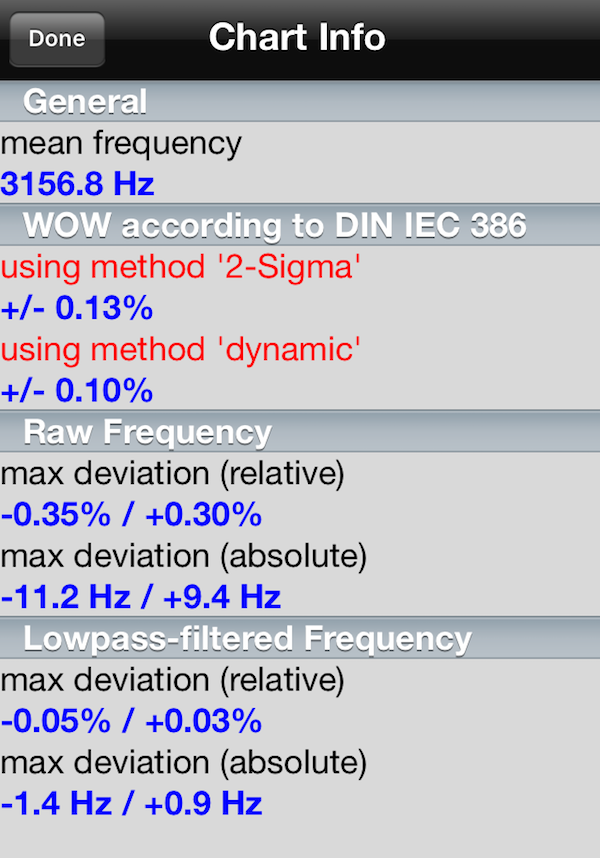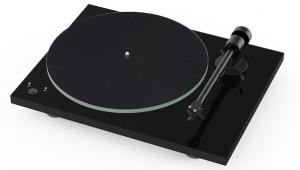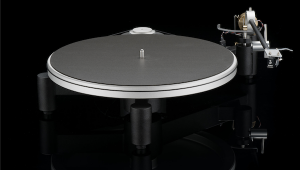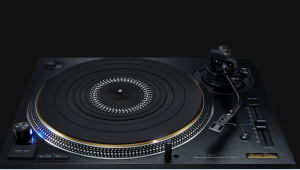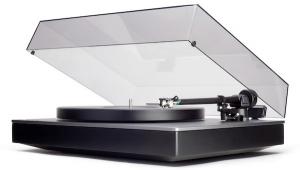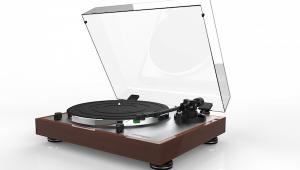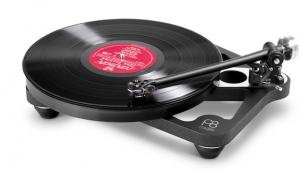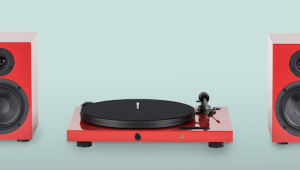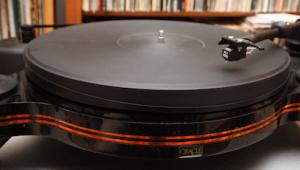The EAT B-Sharp Is An Attractive, Well-Performing Plug'n'Play Turntable
The more than twice as costly Blue, with its nude elliptical stylus, sounds more than twice as good as the Red as anyone who’s upgraded can attest. The Blue’s inclusion here is made possible, in part, because of EAT’s association with Pro-Ject and that company’s considerable buying power.
EAT’s owner and CEO Jozefina Lichtenegger is, as many of you know, wife of Pro-Ject founder and CEO Heinz Lichtenegger. Jozefina is an industry veteran whose audio career predates her marriage to Heinz. She began in 1998 while studying for her MBA selling tubes for her brother-in-law Alesa Vaic, whose Czech Republic-based tube brand VAIC will be familiar to some.
In 2003 after Vaic exited the industry, she began having tubes made for her by Tesla Vrsovice and three years later when the owner decided to retire she bought the company, moved the manufacturing facility to another location away from the center of Prague and renamed it EAT.
While in Vienna looking for an Austrian distributor, she met Heinz. They later married and she was able to expand her business to include electronics and turntables.
While the two are a couple, the two companies are distinct brands with separate sales and distribution networks. EAT turntables are manufactured in the Pro-Ject factory but the company has its own floor and its own designers.
Nonetheless anyone familiar with Pro-Ject turntables will recognize some familiar components, especially the sub-platter/bearing assembly as well as the dustcover and hinge assembly, which the B-Sharp shares with similarly priced Pro-Ject turntables,
Brand new and exclusive to EAT is the B-Note 9” tone arm featuring a light, stiff, tapered carbon fiber arm tube terminated with a black anodized slotted “sandwich” aluminum head shell. The counterweight is TPE (thermoplastic elastomer) damped.
All set-up parameters are adjustable on this arm including VTA/SRA and azimuth. In place of Pro-Ject’s typical nylon string/weight anti-skating adjustment system, EAT uses a lever to which is attached a sliding weight. Many vinyl “newbies” find the string-weight problematic especially since accidentally bumping it can cause the string-weight to pop off and disappear.
The instructions say the arm’s hybrid bearing features a cardanic gimbal with hardened tips seated in zircon bowls for the horizontal axis and ABEC7 ball races for the vertical.
The platter, machined from an aluminum-magnesium alloy damped with a thick elastomer ring that fits into a circular channel machined on the platter’s underside periphery, sits on the familiar looking Pro-Ject subplatter driven by a flat belt and crowned motor pulley.
The motor is an “ultra-low noise” AC unit driven by a “high precision frequency DC-driven AC generator”, both of which I assume are manufactured in the Pro-Ject factory to EAT’s specifications. Motor power comes from a generously sized “wall-wart”.
The low-profile plinth is a sandwich construction of MDF with a “floating” inner MDF chassis resting on elastomer pads. The main chassis holds the motor while the tone arm and brass platter bush attach to the inner “floating” one. The result is an attractive low profile design that sits on a trio of conical TPE damped adjustable feet.
EAT supplies a felt mat, screw-down record clamp, bubble level and high quality “proper” tone arm cables as well as a rudimentary stylus force gauge and overhang alignment paper.
Importer VANA, Ltd. supplies an unusually excellent instruction manual complete with good photos and useful information including unpacking and packing instructions and a blow-up photo.
B-Sharp Unboxing and Setting Up
The Ortofon Blue comes pre-installed and correctly set for overhang and zenith angle. After removing the three transport screws, you install the sub-platter place the flat belt around it and the crowned pulley and put on top the main platter. The trickiest part of the set-up is putting the eye of the anti-skating thread around the small opening on the side of the bearing housing and screwing in the hook screw. Slide the weight to the second shaft groove (for 2 gram tracking force) and you’re done. I confirmed the setting using my Wally anti skating gauge.
There needs to be a deflection of approximately 8 lines towards the beginning of the record from the position of the plumb bob. “Less is more” so this is ideal. As you can see I’ve replaced the felt mat with a Funk Firm Achromat.
Level the plinth, adjust tracking force with the supplied gauge (or use your own) and after inserting the RCA plugs into the rear jacks and attaching the ground wire to the lug, you’re ready to play records. But I’m not. First after letting the platter spin overnight for a thorough break-in, I measured the ‘table’s speed accuracy and consistency.
These results are about what you should expect from a turntable at this price point. They are very good. The ‘table runs a tiny fraction fast at both 33 1/3 and 45rpm, but that discrepancy is so minor as to be insignificant. The other filtered numbers speak for themselves and are just slightly worse than the far more expensive VPI Prime (I’m not suggesting the EAT is any way comparable!).
Despite the TPE damped feet and the “floating” inner plinth, both the outer and inner plinth were quite “lively” to the tap. More importantly though, the entire plinth was well isolated from the platform upon which it rested with a tap ti it barely registering through the speakers.
Listening
I ran the EAT B-Sharp into various phono preamps currently under review including the new Parasound JC-3 Jr.($1495), the really impressive Arcam rPhono ($599) and a few others. I’m not going to turn this into a series of observations about how this turntable performed on records you’ve probably never heard, which is now SOP in audio reviews and is getting tedious.
So I’ll say this: the EAT B-Sharp is a most enjoyable moderately priced turntable that does most things correctly and few things wrong—within the price category. Its speed accuracy and consistency made listening pleasurable and relaxing. Imaging was stable and well-defined as was soundstaging. The ‘table and Ortofon Blue produced a satisfying spread and good sense of depth. In terms of colorations, as the tap test indicated, the B-Sharp tends toward a slight warmth in the upper mid-bass but the lower octaves are well-presented and bass through a system no doubt more robust and extended than with which this turntable is likely to be matched was well-controlled overall, deeper than expected and only slightly exaggerated.
Okay I’ll cite an example (didn’t want to get into this but…). Back in the 1980s Dave Wilson of Wilson Audio Specialties releases a series of records he engineered and released on Wilson Audiophile Recordings. Many have recently been reissued by Analogue Productions cut from the original master tapes by Kevin Gray. The recorder was John Curl’s Ultramaster™. These were mimimally miked, sensationally natural sounding efforts. The blockbuster among them is Winds of War and Peace (APC 8823). It’s the National Symphonic Winds conducted by Lowell Graham. The story behind this recording of fanfares, marches and other military fare recorded in an aircraft hanger is a story worth telling but not here (Lowell Graham himself told it a few years ago at a show, which I think was an RMAF but they all tend to blur into one after a while).
In any case, the orchestra includes an enormous bass drum that’s struck by what Graham called the “MOD” or “Mallet of Death”. This produces an enormous, deep “THWACK!” that’s perfectly caught on tape and engraved in the grooves. Any numbnut who thinks deep bass can’t be captured on a record should hear this!
In fact, I brought a 96/24 copy of the opening “Liberty Fanfare” by John Williams, which sounds very similar to the opening of NBC’s “Nightly New”, which Williams also composed and I played it in a number of rooms at a C.E.S. a few years ago. I used the Swedish Analog Technology arm for playback so you can be sure every bit of deep bass energy was captured to the digits.
In one room at not very high volume when the first “THWACK” occurred, suddenly the ceramic midrange driver on one of the speakers literally vaporized! The voice coil kept moving in and out but there was no cone. Oops!
So it’s a test of both speakers and turntables. The “THWACK” through the EAT B-Sharp was deep, tuneful and well controlled, though a bit larger than life with a slight “overhang”. But overall it was surprisingly good and better than I was expecting.
More importantly the top end was precise, cleanly delivered and well-extended and backgrounds were quiet, black and free of mechanical artifacts. What we call "rhythm'n'pacing was good and the 'table carried a coherent tune that made familiar records sound, well, familiar.
Of course if the ‘table and arm are doing their job you should be hearing more of the cartridge and less of the ‘table and arm. I’ve heard the 2M Blue in many settings (I have another one here in another ‘table under review) and it performed about as good as I’ve heard it in a moderately priced turntable.
What even the best ‘tables at this price point do is produce more than is ideal because they overshoot the marks, sort of like what happens when a lens is somewhat out of focus and that’s what the B-Sharp and every other ‘table at this price point does. Can’t be helped.
With the better ‘tables at this price point the sonic blur is not gross, nor is it concentrated in one region, which makes it readily apparent. In other words if the bass exaggeration is gross or uncontrolled you’ll hear it immediately and always. Likewise if the top smears it won’t easily be ignored. That 'table will not "carry a tune" or have good "rhythm'n'pacing. This one does.
What I like about the B-Sharp was that it dared “go deep” without announcing the low frequency overshoot and it maintained graceful high frequency transient control. Pair if with a moderately priced bookshelf speaker that doesn’t try to produce more bass than it’s capable of and doesn’t cheat by adding lumpy mid-bass and you’ll find this to be a great affordable turntable that will take good care of your records until you hit the jackpot or rob a bank.
If you ask me “EAT B Sharp or one of the other ‘tables lingering around at this price point I can neither give you a definitive answer nor tell you what to buy. What I can say is that you won't regret buying this one.
I can alsosay that the EAT B-Sharp is a well-constructed turntable with a high performance arm capable of handling a wide range of cartridges including far more expensive ones than the 2M Blue and with its full range of adjustments has advantages over some of the competition. I guess I wish the plinth was somewhat less lively, but for $1595 including a $250 cartridge and all the rest that it offers the EAT B-Sharp is a great looking, versatile and fine sounding “plug’n’play turntable that’s easy to recommend as a starter ‘table or a step up from the lowest priced non-toy players.
The EAT line is imported by VANA, Ltd (Specs to be added ASAP)
